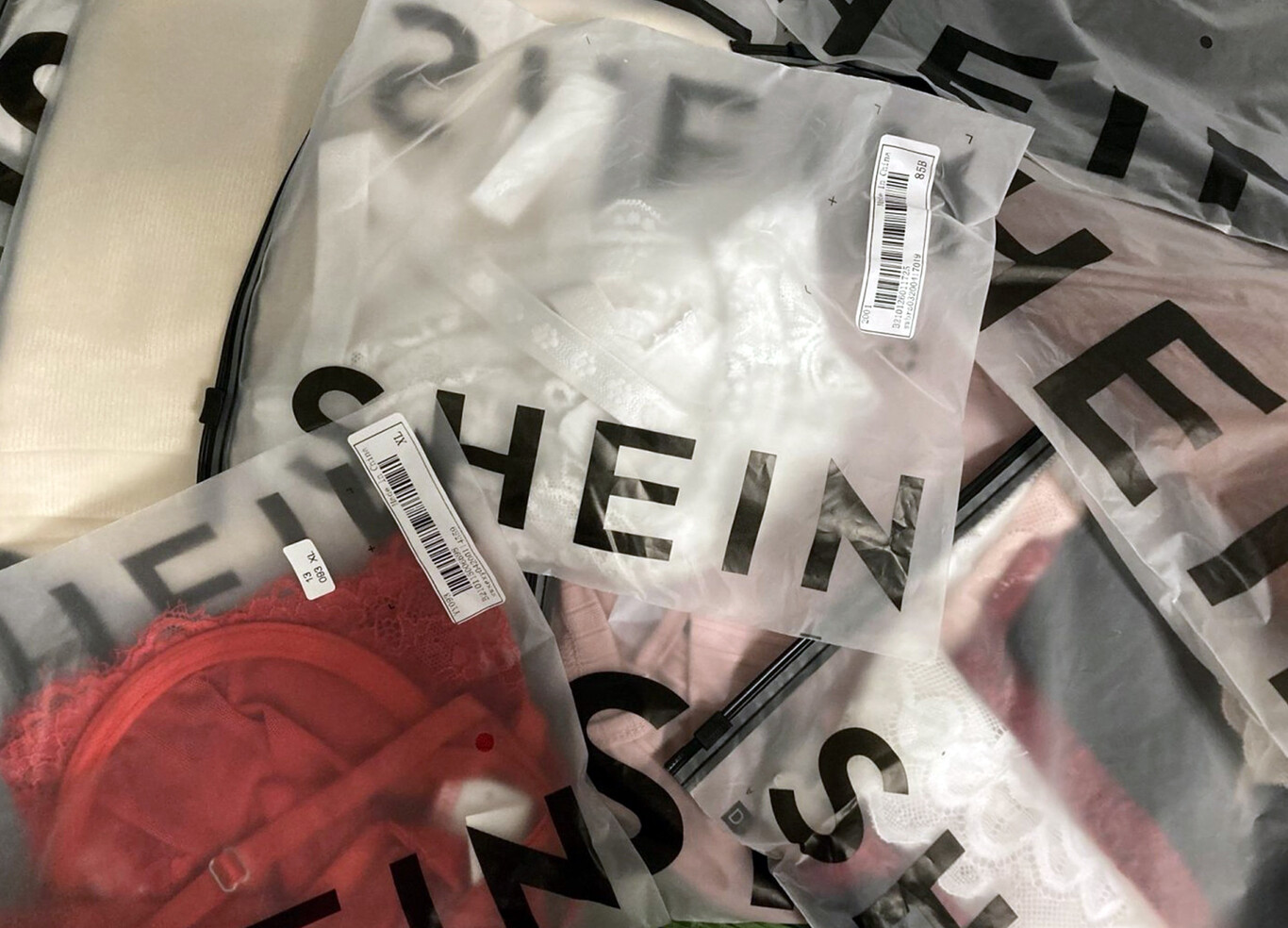
When you think about buying something online, the inevitable reference is Amazon, but lately, a company called Shein is managing to become a unique threat to the e-commerce giant.
Some call it “the TikTok of e-commerce”, and the truth is that this company has a strong relationship with this social network and with Instagram, where micro-influencers and even some celebrities recommend it non-stop. Among other things, because the products sold there (especially clothing) are extraordinarily cheap.
Knocking down prices and bragging about it on TikTok and Instagram
Shein (pronounced “shi-in”) has become the fashion store among micro-influencers, especially when it comes to fashion. Clothes are astonishingly cheap, and as Packy McCormick said in his deep analysis of this phenomenon in Not Boring, those prices “make Amazon look expensive. “
The expectation that Shein has created has made it become the number one application in the “Shopping” category of the App Store in 56 countries. In Apptopia they describe it not as an app, but as a “super app”.
According to data from App Annie and Sensor Tower, Shein is the most downloaded app in the field of e-commerce in the United States for both iOS and Android. It has effectively ousted Amazon, and has become an unusual “unicorn.”
The online revolution that threatens Amazon… and Zara
It is a “great unicorn” because, after several rounds of investment, its valuation is already at no less than 15 billion dollars. According to these data, in 2019 it sold products worth almost 4,000 million euros, which represents 1/7 of Inditex’s sales and 2.5 of H&M’s.
Shein’s approach is completely online, thus testing the model of groups with a strong physical presence such as Inditex, which due to the pandemic had to close 1,200 stores around the world.
Founded in 2008 and with its headquarters in Nanjing, in the Chinese province of Jiangsu, Shein’s progression has been slow and very, very quiet: it is one of the few companies that tries not to appear too much in traditional media, neither good or bad.
Its CEO Chris Xu (or Xu Yangtian) does not seem to grant interviews, and in one of those requests he replied to the editor that they could publish whatever they wanted, but if it was not true “I would sue them.”
Our colleagues at Trendencias—another of Webedia’s vertical media outlets—were already unraveling their strategy of ” cloning and dumping prices ” at the end of 2013, and the truth is that this strategy seems to be working .
The era of real-time trading
As they explained in an analysis on the Chinese website LatePost, it seems that Shein has had Zara’s philosophy as a reference to try to surpass it in all areas .
While traditional brands have “created” fashion themselves, almost guessing what to wear, Zara has followed a model that does not guess what the public wants, but rather studies trends and data from various sources to combine them into your designs.
Despite Zara’s polished design, production, and distribution processes, Shein goes a step further and makes extensive use of Google trends to find out which colors, fabrics, and styles are most popular.
As noted in Not Boring, “Shein does not have its style. It does not try to impose its tastes on its consumers globally. They do not even have their tastes. They are a reflection of the style of each country, in real-time, based solely on data .”
Only 7 days pass from testing to production—compared to Zara’s 14, which was already a surprising achievement—and the absence of physical stores also allows us to be more dynamic when putting these garments on sale. According to this analysis, Shein can test 30 styles of clothing compared to the 5 or 6 that Zara can test at most before putting its products on sale.
Thanks to this strategy, these analysts say, they manage to be more efficient, get more right, and put products on sale faster, thus threatening the traditional business of brands like Zara, but also giants like Amazon.
From fast fashion – with which Inditex became a reference – or ultra-fast fashion, we have moved on to a model that some have already called real-time commerce or fashion.
The unknown will cease to be unknown very soon
Shein’s departure seems overwhelming. In 2020 he achieved revenues of $10 billion (compared to $4.5 billion in 2019), and while traditional brands fell due to the pandemic, Shein did nothing but gain in numbers.
Its performance is impressive not only when we compare it with other large e-commerce platforms but even with companies in other segments.
In a recent analysis of the most promising Chinese brands Shein managed to position itself ahead of Tencent in 11th place, and in its investment rounds it not only attracts Chinese capital, but also very strong investment funds in the United States such as Sequoia Capital. They have all seen something special in Shein… or so it seems.
Shein has been able to take advantage of the fact that TikTok is the fashionable social network
Another of Shein’s keys was its interaction on social networks. Although she was not by far the first to take advantage of this media. She makes a significant investment in advertising on Facebook and Instagram — where her fashion products constantly appear — but they have also extensively used the channels offered by influencers.
TikTok is one of Shein’s massive promotion channels. The influencers on this platform often make videos in which they try on not one, but dozens of clothes and fashion objects that they obtain from the Shein store, which ends up being a multiple promotion of their products.
That becomes clear when you take a look at the #sheinhaul tag, which currently shows no less than 2.5 billion views for those small videos in which, above all, TikTok users try on the clothes they buy there.
These micro-influencers publish these videos for free because they hope to take advantage of the high commissions for affiliates: between 10 and 20% of the purchases that others make through their links end up in their pockets, a truly spectacular percentage compared to the commissions of approximately 2 to 4% (in some cases more depending on the type of product) that are usually achieved on other platforms such as Amazon.
They not only feed on less popular influencers but also on the so-called KOLs (Key Opinion Leaders), which are famous people who promote their products. Even Addison Rae, one of TikTok’s brightest stars, has promoted their products. The technique, as explained in The Telegraph, works.
This success contrasts with a singular reality: the firm is based in China, but does not sell there: instead, it sells in 220 other countries around the world, and although delivery times are usually much longer than those they can offer other competitors, their low prices end up being a devastating argument for their customers.
At Shein they also make massive use of that strategy already known from other Chinese e-commerce platforms in which offers, coupons and points reward those who spend the most. Low prices usually cause “a kind of ‘Primark effect’: since you see it so cheap, you buy a lot,” as Patricia de la Torre, director of Trendencias, told us.
Shein’s progress is truly surprising, and now it remains to be seen how far they can go and if they end up becoming that e-commerce giant that competes face-to-face even with Amazon.

Sharlene Meriel is an avid gamer with a knack for technology. He has been writing about the latest technologies for the past 5 years. His contribution in technology journalism has been noteworthy. He is also a day trader with interest in the Forex market.











![Close Subdivx: The Veteran Page To Download Subtitles Says Goodbye To Pressure From Rights Owners [Updated] Close Subdivx the veteran page to download subtitles says goodbye to pressure from rights owners [Updated]](https://techsmartest.com/wp-content/uploads/2023/06/Close-Subdivx-the-veteran-page-to-download-subtitles-says-goodbye-to-pressure-from-rights-owners-Updated-100x70.jpg)